Disc brake pads for a bicycle: varieties and tips for choosing
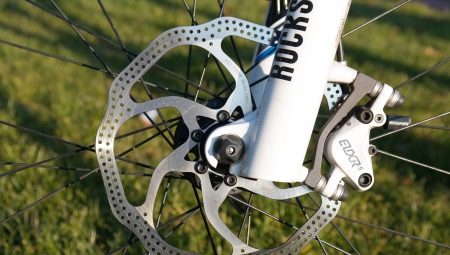
The brakes are, without a doubt, the most important part of the bike. A well-tuned braking system is a guarantee of safe driving and a prerequisite for driving at high speed. And brake pads are the most important part of the braking system, since they determine the efficiency of its work, and this is especially true in wet weather.
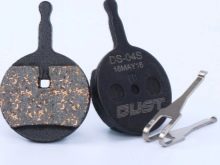
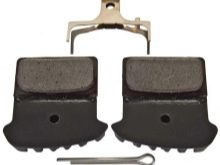
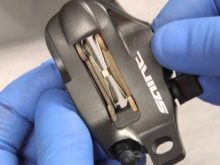
Peculiarities
Disc brakes first gained popularity on mountain bikes as this type of brake offers excellent stopping power in all weather conditions. But now they can be seen on all types of bikes - from racing bikes designed for tough workouts to walking city bikes.
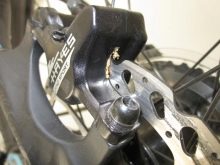
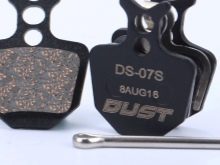
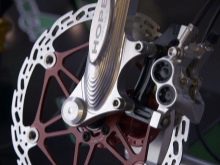
Bicycle disc brakes can be mechanical (they use cables) and hydraulic, in which the cables are replaced with hydraulic fluid. The braking performance of hydraulic and mechanical disc brakes is practically the same. Both the first and the second do an excellent job with their tasks. Two factors have a much greater influence on braking power:
- brake pads (material and dimensions);
- rotor diameter.
Before choosing disc brake pads, there are a number of factors to be aware of. There are many different options for both road and mountain bikes.
From all this variety, it is necessary to choose a block that will not only match the caliper of a particular bike in shape, but will also be made of material that takes into account the needs of the user.
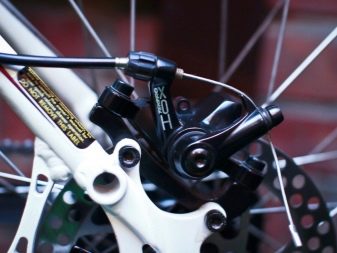
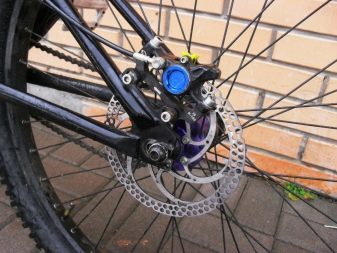
The form
The pads can be round, rectangular and square. It depends on the design of the caliper. Different calipers have different shapes and different ways of holding the pads in place. It goes without saying that the shape of the pad must match the shape of the caliper. The easiest way is to look at the name of the brakes (usually it is written on the caliper) and choose the pads of the same model. If the exact same model could not be found, it is necessary to remove the original pads and compare their shape with the form of the intended replacement.
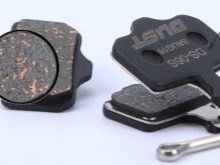
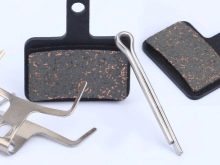
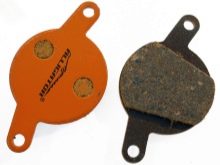
Material
All pads are made by mixing various powdered components with a binder and then pressing this mixture at high temperatures and pressures. The greatest influence on the properties is exerted by the composition of the powdery components. These can be organic fibers or metal particles. Therefore, all pads are divided into three categories:
- organic;
- metal,
- semi-metallic.
Each category has its own advantages and disadvantages. There is no perfect brake pad to fit every bike.
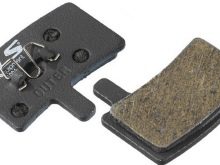
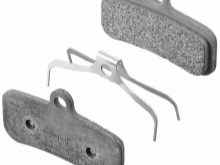
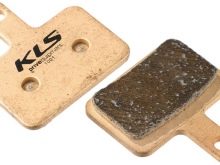
Organic The pads are made of rubber, carbon or Kevlar fibers, and resin is used as a binder. Metallic (they are also called sintered) consist of metal particles (most often copper chips are used), sintered under high pressure. Semi-metallic have an organic base to which metal components are added.
The difference in composition determines different properties. Organic pads are softer, brake efficiently and quiet enough. According to the results of comparative tests, they have a higher braking torque (about 10% higher) than metal ones, while the braking time is about 9% shorter.
Nevertheless on long descents, organic pads perform much worse than metal pads, since at high temperatures the binder melts and all material wears out quickly. In addition, they do not brake well on wet roads. Metal pads handle heat much better than organic pads, are stable when wet, but are noisy.
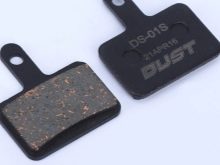
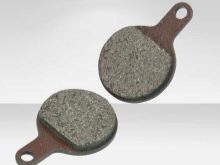
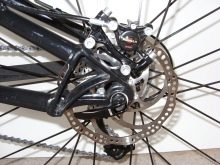
Pros and cons of each type
It is impossible to determine what the block is made of by its appearance. It is necessary to study the product description or information on the packaging.
Metallic
Pros:
- the most durable;
- can withstand very high temperatures;
- the working surface is not subject to melting;
- very effective when driving at high rpms, which is important, for example, on steep descents.
Minuses:
- the lapping process can take a very long time;
- high temperatures can change the working properties of mineral oils in the hydraulic system;
- weak initial bite;
- can be quite noisy.
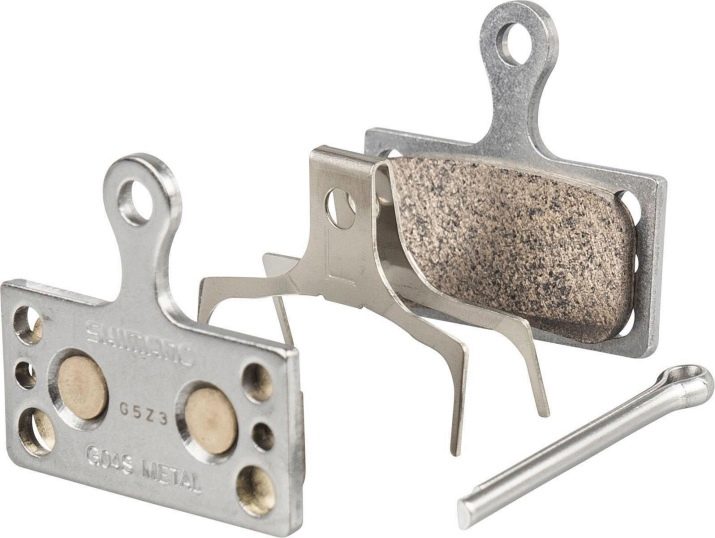
Organic
Pros:
- quick lapping;
- good initial bite and modulation;
- less noisy;
- transfer less heat to mineral oil systems.
Minuses:
- the service life is shorter than that of metal, especially when used in wet weather;
- less efficient at high revs;
- the work surface can be sintered.
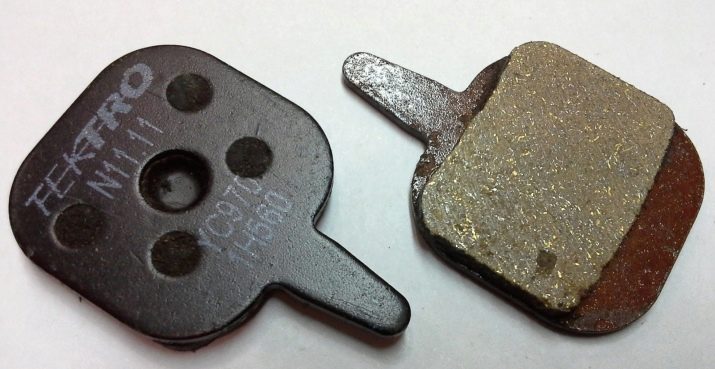
Semi-metallic
Pros:
- combine the advantages of metal and organic pads;
- good efficiency at high speeds;
- good initial bite and modulation;
- durable enough.
Minuses:
- the working surface can be sintered;
- different brands may have different ratios of metal and organic components;
- higher price.
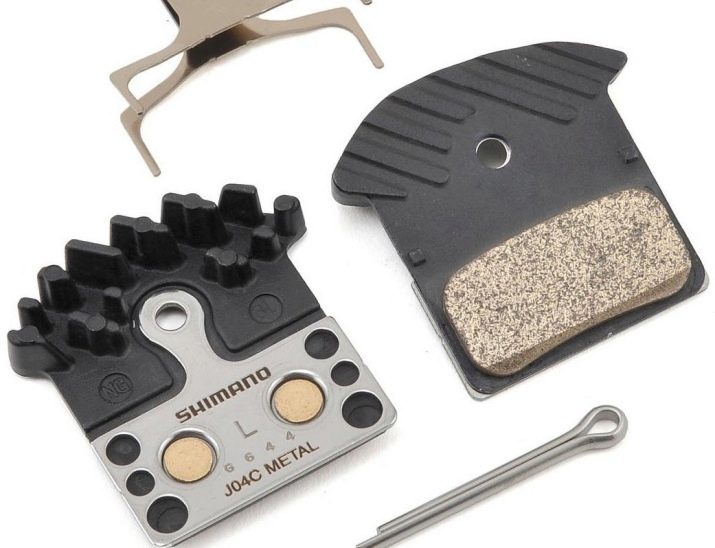
Which is better?
It all depends on where and how the cycling takes place. If this is a flat area with no steep descents, then organic stocks are fine. They are quiet, often cheaper than others, and provide powerful braking immediately after pressing the lever.
If you have to frequently ride long descents with full braking, then metal pads are a smart choice. They provide very powerful braking power and serve for a very long time. Of course, in this case, you have to come to terms with the noise.
.
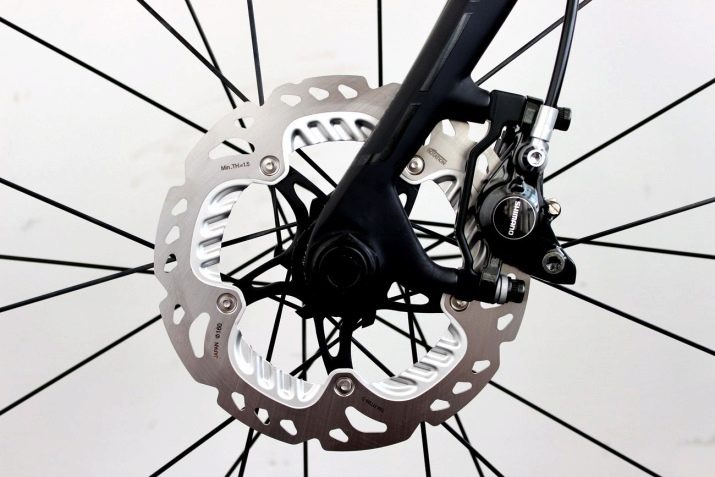
Semi-metallic pads are a great solution for any type of riding, they have a decent initial bite, good high temperature performance and high wear resistance.
Nothing prevents you from using different types of brake pads on the same bike in the rear and front brakes. Rear brakes tend to be heavier, on the other hand, having a good initial bite is more necessary up front, so combining a metal pad on the rear brake with a semi-metal pad on the front can provide excellent performance. A combination of a semi-metallic back and an organic front can work well too.
Some manufacturers recommend changing the rotor when replacing metal pads with organic ones, therefore, prior to such replacement, it is necessary to read the user manual.
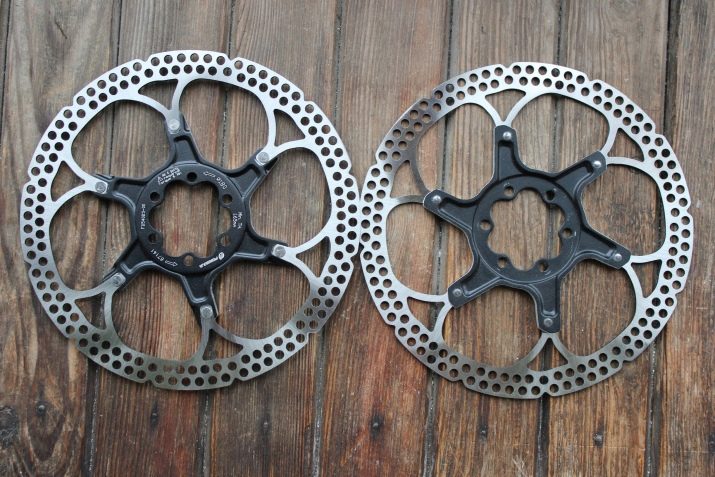
Shimano Brake Pads
Separately, it should be said about the ribbed brake pads Shimano. They have a base plate with a finned radiator that protrudes from the top of the caliper. This is said to provide improved brake performance as the heat generated during braking is carried away from the pad surface into the plate and dissipated by the airflow.
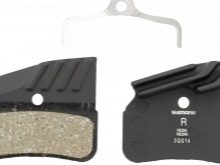
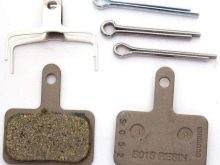
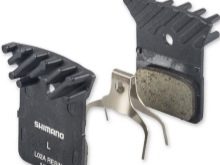
Initially, they only stood on Shimano brakes, but later some manufacturers used this idea for their brands, and now such pads can be seen in the brakes:
- Superstar Components;
- Uberbike Components;
- Swiss Stop;
- and some other firms.
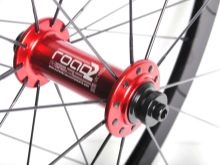
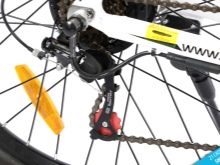
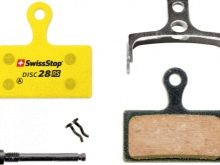
However, not all firms can present the results of laboratory tests proving the efficiency of cooling of ribbed pads, and they are more expensive than conventional ones, so you need to be very careful about their purchase.
See below for how to replace disc brake pads on your bike.








